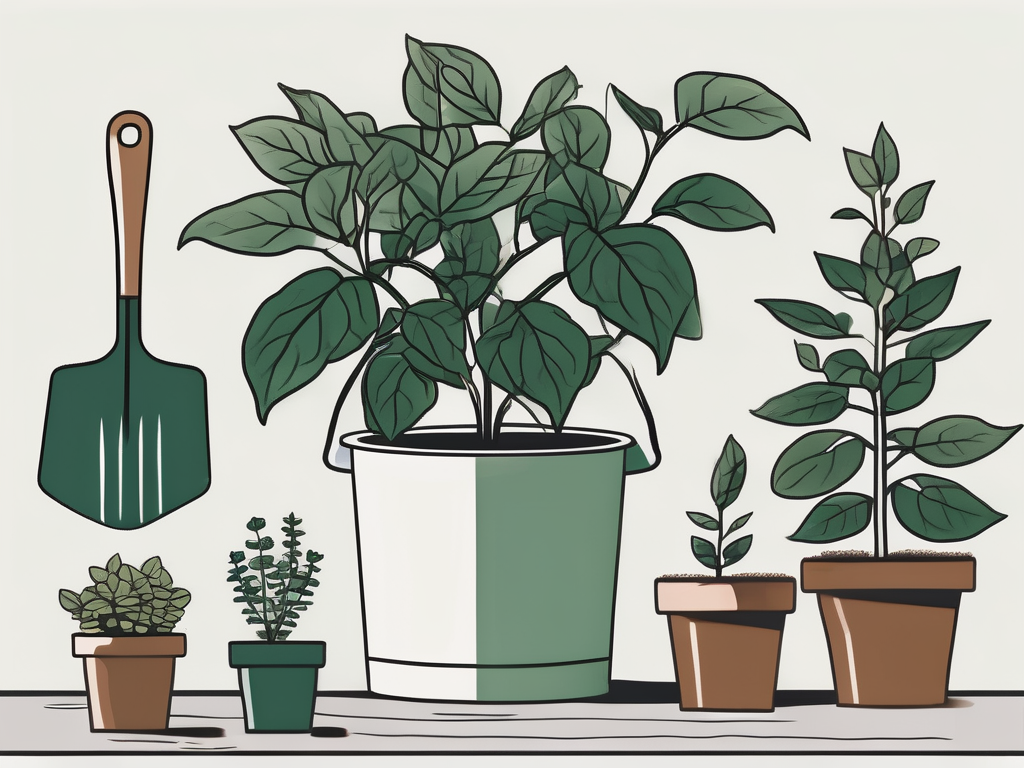
Spider plants are like the friendly neighborhood plant you never knew you needed. They're resilient, forgiving, and have a knack for sprucing up any corner of your home. If you've ever been captivated by their graceful arching leaves and charming little plantlets, you're not alone. Spider plants have been a staple in homes for decades, and for good reason.
This article will guide you through the various types of spider plants, offering tips on how to care for them and integrate them into your home decor. From the classic favorites to some lesser-known varieties, we'll explore what makes each one special and how to keep them thriving.
Classic Variegated Spider Plant
The classic variegated spider plant, or Chlorophytum comosum 'Variegatum', is probably what comes to mind when you think of a spider plant. It features long, slender leaves with green centers and creamy white edges. This variety is the poster child of spider plants, and it’s often the first choice for new plant lovers.
One of the reasons this plant is so popular is because it's incredibly forgiving. If you forget to water it once in a while, it won’t hold a grudge. It thrives in indirect light, making it perfect for those spots that get a bit of sun but not too much. Just remember to rotate the pot every few weeks to keep it growing evenly.
- Watering: Water when the top inch of soil feels dry. Overwatering is a more common issue than underwatering.
- Light: Prefers bright, indirect sunlight but can tolerate lower light conditions.
- Temperature: Ideal range is between 65°F and 75°F.
Interestingly enough, this plant's resilience makes it a fantastic option for offices and classrooms. So, if you're looking to green up your workspace, the classic variegated spider plant might just be your new best friend.
Reverse Variegated Spider Plant
If you're someone who loves a twist on the classics, the reverse variegated spider plant, or Chlorophytum comosum 'Vittatum', offers a refreshing change. This variety flips the script with green edges and a white center stripe. It's a subtle difference, but it can make a world of difference in your plant collection.
This type also shares the easy-going nature of its classic cousin. It's great for plant parents who might not have the greenest thumbs yet. The care routine is pretty much the same, allowing you to add a touch of variety without complicating your plant care regimen.
- Watering: Similar to the classic variety, water when the soil is dry to the touch.
- Light: Bright, indirect light is best, but it can also handle less light.
- Temperature: Keep it in a cozy spot, ideally between 65°F and 75°F.
Think of this plant as the sibling who borrowed your clothes and somehow made them look even better. It's different but still part of the family, adding a bit of flair to your plant lineup.
Bonnie Spider Plant
The Bonnie spider plant is like the curly-haired cousin of the spider plant family. Its leaves twist and curl, giving it a playful, whimsical look. This variety is perfect if you want a plant that's a bit more unusual but still easy to care for.
Because of its unique appearance, the Bonnie spider plant can become a focal point in your plant display. Its curly leaves add texture and interest, making it a standout piece without needing extra attention.
- Watering: Water when the top inch of soil is dry. It's less demanding, so a little neglect won’t hurt.
- Light: Prefers bright, indirect light but can adjust to lower light levels.
- Temperature: Happy in temperatures ranging from 65°F to 75°F.
It's the kind of plant that brings a smile every time you see it, almost like it's inviting you to play. The Bonnie spider plant is perfect for those who want something a little different without straying too far from the familiar.
Hawaiian Spider Plant
If you’re dreaming of tropical vibes, the Hawaiian spider plant might be your ticket to paradise. This variety features broader leaves with a deeper green color and a slightly more dramatic flair. It's a bit more exotic than the typical spider plant, offering a bold statement for your home.
The Hawaiian spider plant thrives in similar conditions to its relatives, but it benefits from a touch more humidity. If you're in a drier climate, consider misting it occasionally or placing it near a humidifier to keep it happy.
- Watering: Let the soil dry out slightly between waterings.
- Light: Does well in bright, indirect light but can tolerate some shade.
- Temperature: A fan of warmth, it prefers 65°F to 75°F, making it feel right at home in most indoor settings.
The Hawaiian spider plant is like the vacation you can have right in your living room. It brings a lush, tropical feel to your space with minimal effort on your part.
Ocean Spider Plant
For those who love a bit of drama, the Ocean spider plant is a showstopper. With its distinctive green and white striped leaves, it’s a striking addition to any plant collection. This variety is named for its wave-like leaf patterns, reminiscent of gentle ocean waves.
While it shares many care requirements with the other spider plants, the Ocean variety appreciates a bit more light. It's ideal for a well-lit room where it can soak up some indirect sunshine.
- Watering: Keep the soil evenly moist, allowing it to dry out slightly between waterings.
- Light: Prefers bright, indirect sunlight, making it a great candidate for a sunny window.
- Temperature: Comfortable in temperatures between 65°F and 75°F.
The Ocean spider plant is like a little slice of beachside living. Its dramatic leaves add a touch of sophistication and charm, making it a beloved choice for plant lovers who enjoy a bit of flair.
Zebra Spider Plant
The Zebra spider plant is a rare gem that stands out with its striking leaf patterns. This unique variety features leaves with bold white stripes that contrast sharply against the green, creating a zebra-like appearance. It's a fantastic choice if you're looking to add a bit of the wild to your collection.
This plant thrives in conditions similar to its spider plant cousins but appreciates a little more attention to its watering schedule. It's worth the effort for its dramatic look and the conversation starter it can become.
- Watering: Allow the top inch of soil to dry out before watering again.
- Light: Loves bright, indirect light, but can tolerate some shade if necessary.
- Temperature: Prefers a cozy environment between 65°F and 75°F.
The Zebra spider plant is like having a piece of the savanna right in your home. Its striking appearance is sure to catch the eye of anyone who visits, making it a prized possession for plant collectors.
Mandarin Plant (Orange Spider Plant)
For a splash of color, the Mandarin plant, also known as the Orange spider plant, is a delightful choice. This variety features green leaves with bright orange stems, adding a burst of warmth to your plant collection. It's a wonderful way to bring a bit of sunshine indoors.
The Mandarin plant is relatively low-maintenance, but it does enjoy a bit more humidity than some of the other spider plant varieties. A little misting now and then can go a long way in keeping it vibrant and happy.
- Watering: Water moderately, allowing the soil to dry out slightly between waterings.
- Light: Prefers bright, indirect light but can handle lower light levels.
- Temperature: Thrives in temperatures between 65°F and 75°F.
The Mandarin plant is like bringing a little piece of a tropical sunset indoors. Its cheerful colors and easy-going nature make it a lovely addition to any home.
Variegated Bonnie Spider Plant
The Variegated Bonnie spider plant combines the best of both worlds with its curly leaves and variegated patterns. It's a striking choice for those who want a plant that's both playful and elegant. This variety adds a touch of whimsy with its delightful curls and contrasting colors.
As with other spider plants, the Variegated Bonnie is easy to care for, making it a great choice for anyone looking to diversify their plant collection without adding complexity to their care routine.
- Watering: Allow the soil to dry out slightly between waterings.
- Light: Bright, indirect light is ideal, but it can adapt to lower light conditions.
- Temperature: Prefers temperatures from 65°F to 75°F.
The Variegated Bonnie spider plant is like a little piece of art you can grow. Its unique appearance and easy care make it a joy to have around, offering a touch of fun and creativity to your indoor jungle.
Final Thoughts
Spider plants are a fantastic addition to any home, offering a variety of styles and colors to fit your personal taste. From the classic variegated to the playful Bonnie, each type brings something special to the table. With their forgiving nature and easy care routines, they’re perfect for both new and experienced plant parents.
At Cafe Planta, we believe in the power of plants to bring joy and connection to our lives. Whether you’re looking to expand your collection or just starting out, we’re here to help. Feel free to reach out via email or Instagram. We’re excited to share our love of plants with you and help you create a thriving plant haven in your home.












